
The Federal League of Base Ball Clubs, known simply as the Federal League, was an American professional baseball league that played its first season as a minor league in 1913 and operated as a "third major league", in competition with the established National and American Leagues, from 1914 to 1915.
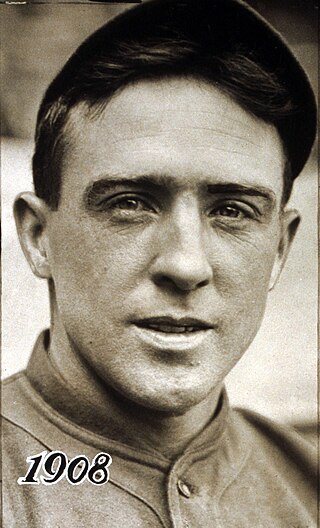
Joseph Bert Tinker was an American professional baseball player and manager. He played from 1902 through 1916 for the Chicago Cubs and Cincinnati Reds of Major League Baseball (MLB) and the Chicago Whales of the Federal League.
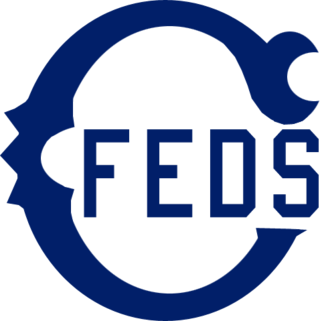
The Chicago Whales were a professional baseball team based in Chicago. They played in the Federal League, a short-lived "third Major League", in 1914 and 1915. They originally lacked a formal nickname, and were known simply as the "Chicago Federals" to distinguish them from the Chicago Cubs and Chicago White Sox.
The Pittsburgh Rebels were a baseball club based in Pittsburgh, Pennsylvania, from 1913 to 1915. The team was a member of the short-lived Federal League. The team was originally called the Pittsburgh Stogies after an earlier Pittsburgh team that played in the Union Association in 1884, but became known as the Rebels by the end of the 1914 season. The team played all of its home games at Exposition Park, located on Pittsburgh's Northside. The Pittsburgh Pirates of the National League left the stadium for Forbes Field in 1909. After the Rebels left Exposition Park in 1915, the field was demolished and its property became part of the adjacent rail yards.

Frederick Thomas Beck was a baseball player in the major leagues from 1909 to 1911 with the Boston Doves, Cincinnati Reds, and Philadelphia Phillies. In 1914 and 1915, he played for the Chicago Whales of the Federal League. In one season (1910), Beck tied two other players for the league lead in home runs. Beck played minor-league baseball for many years, missing one season due to service in World War I. He retired from professional baseball after the 1926 season.
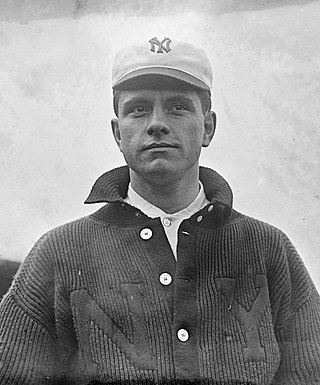
Russell William Ford was a Canadian-American professional baseball pitcher. He played in Major League Baseball for the New York Highlanders / Yankees of the American League from 1909 to 1913 and for the Buffalo Buffeds / Blues of the Federal League in 1914 and 1915. Ford is credited with developing the emery ball.

Edward Francis Sweeney, often referred to as "Big Ed Sweeney", was an American professional baseball catcher. He played in Major League Baseball for the New York Highlanders / Yankees of the American League from 1908 to 1915 and the Pittsburgh Pirates of the National League in 1919.
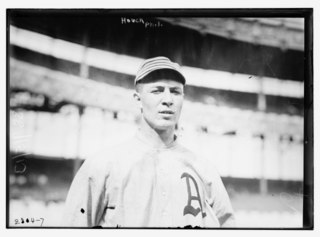
Byron Simon Houck was an American professional baseball pitcher and cinematographer. He played in Major League Baseball for the Philadelphia Athletics, Brooklyn Tip-Tops, and St. Louis Browns from 1912 to 1914 and in 1918. After his baseball career, he worked on Buster Keaton's production team as a camera operator.
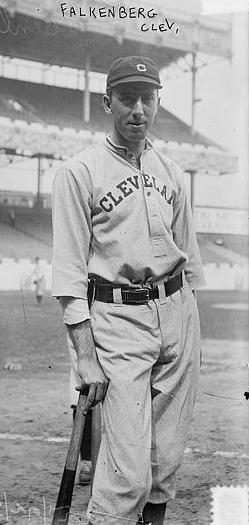
Frederick Peter "Cy" Falkenberg was an American professional baseball pitcher. He played in Major League Baseball (MLB) from 1903 to 1917 for the Pittsburgh Pirates of the National League, the Washington Senators, Cleveland Naps, and Philadelphia Athletics of the American League and the Indianapolis Hoosiers, Newark Peppers, and Brooklyn Tip-Tops of the Federal League.
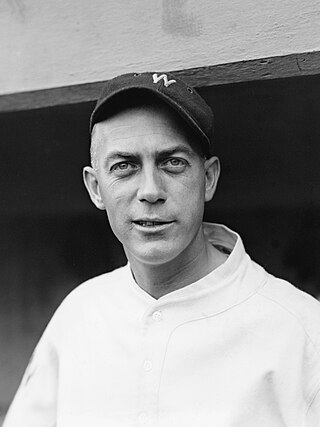
George Anthony Mogridge was an American professional baseball pitcher. He played in Major League Baseball for the Chicago White Sox (1911–12), New York Yankees (1915–20), Washington Senators (1921–25), St. Louis Browns (1925), and Boston Braves (1926–27). Mogridge threw the first no-hitter for the Yankees franchise in 1917 and was a member of the 1924 World Series champions with the Senators.
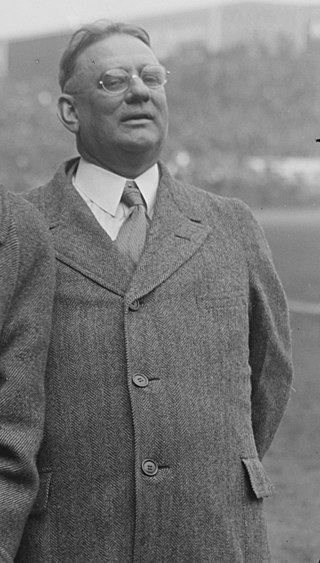
Tillinghast L'Hommedieu Huston was an American civil engineer and businessman. He co-owned the New York Yankees of Major League Baseball with Jacob Ruppert from 1915 to 1923, turning them from one of the worst franchises in baseball into a World Series contender.

Frederick James Blanding, nicknamed "Fritz," was an American baseball player. He played five seasons as a right-handed pitcher in Major League Baseball for the Cleveland Naps from 1910 to 1914. He pitched a six-hit shutout against Walter Johnson in his Major League debut in September 1910. His best seasons were 1912 and 1913, during which time he compiled a record of 33–24. His career record with Cleveland was 46-46.
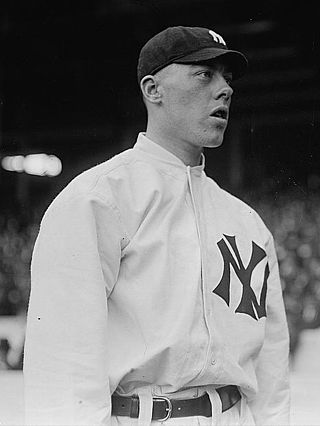
Raymond Herbert Keating was an American professional baseball pitcher. He played in Major League Baseball for the New York Highlanders / Yankees of the American League from 1912 to 1916 and in 1918 and for the Boston Braves of the National League in 1919. In 1914, Keating was caught throwing an emery ball, and the pitch was declared to be illegal.
The Colonial League was the name of two mid-level American minor baseball leagues. The first Colonial League was a Class C level league that existed from 1914 to 1915 as a minor league for the outlaw Federal League. The second Colonial League existed from 1947 through mid-July 1950. It was graded Class B, two levels below the major leagues, and featured teams based in Connecticut, New York and New Jersey
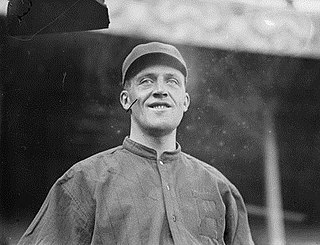
Ensign Stover Cottrell was an American professional baseball pitcher who played in Major League Baseball from 1911 to 1915 with the Pittsburgh Pirates, Chicago Cubs, Philadelphia Athletics, Boston Braves, and New York Yankees.

Hugh Stanley Miller was an American professional baseball first baseman. Miller played in Major League Baseball for the Philadelphia Phillies of the National League in 1911 and the St. Louis Terriers of the Federal League in 1914 and 1915. He batted and threw right-handed.
Charles B. Coppen was an American journalist who was the sports editor for the Providence Journal. He was also a baseball executive and a part owner of the Providence Steam Roller of the National Football League. He not only shared ownership of the team with Peter Laudati and James Dooley, but was also a co-founder of the team with Pearce Johnson, the team's general manager. In addition to his duties to the Steam Roller, he also had a budding law practice. His career with the Providence Journal ended with his involvement with the Steam Roller and in managing boxers. Coppen was also the manager of Providence's stadium, the Cyclodome.

A protested game occurs in baseball when a manager believes that an umpire's decision is in violation of the official rules. In such cases, the manager can raise a protest by informing the umpires, and the game continues to be played "under protest." Protests were allowed in Major League Baseball (MLB) through the 2019 season, after which they were abolished.
The Cleveland Green Sox were a baseball club based in Cleveland, Ohio. In 1913, the Green Sox were charter members of the Federal League. The Cleveland Green Sox were managed by Baseball Hall of Fame member Cy Young and played just the 1913 season before the franchise was folded. Finishing in second place, the Green Sox hosted home games at Luna Park. The Green Sox franchise was ultimately forced out in Cleveland when the major league Cleveland Naps relocated the Toledo Mud Hens to Cleveland for the 1914 season.

An emery ball is an illegal pitch in baseball, in which the ball has been altered by scuffing it with a rough surface, such as an emery board or sandpaper. This technique alters the spin of the ball, causing it to move in an atypical manner, as more spin makes the ball rise, while less spin makes the ball drop. The general term for altering the ball in any way is doctoring. The emery ball differs from the spitball, in which the ball is doctored by applying saliva or Vaseline. Vaseline or saliva smooths the baseball, while the emery paper roughens it.
















